Our past is still overshadowed by great myths. The legend of the invincible hussars is adjacent to the blahs of defense of Westerplatte. The belief that we were the granary of Europe is mixed with the belief that the fights for Częstochowa are wonderful. How was it really?
As always, all TOP10 items are based on the articles we publish. This time we decided to show how many myths weigh on the perception of Polish history. And more historical lies and myths can be found HERE .
Finally, we have to disprove the statement that:
10. The Hussars haven't lost a battle in 126 years
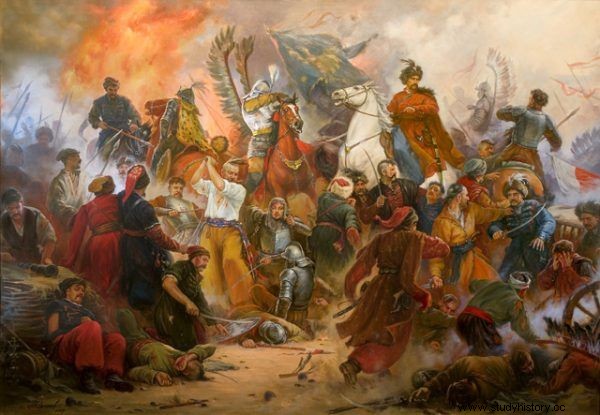
Many myths have arisen around the hussars. Time to deal with them. The illustration shows a fragment of Artur Orlionow's painting "The Battle of Beresteczek" (license CC BY-SA 3.0).
This is a very popular thesis, which was initiated by the article by Jerzy Teodorczyk entitled "Bitwa pod Gniewem" (22.IX.-29.IX.-1.X.1626). The first defeat of the hussars ”. This title is twice as misleading. For the Battle of Gniew was neither a defeat for the hussars, nor was it the first battle in which the hussars were present, and the battle was lost. For example, a few years earlier, at Cecora, despite the presence of numerous hussars, the Polish army withdrew from the battlefield (read more on this topic).
9. The French did not want to die for Gdańsk
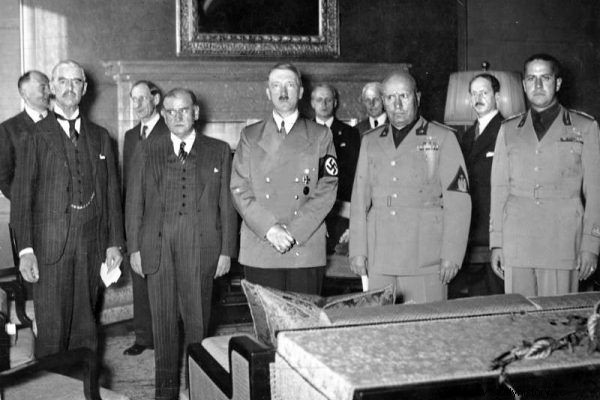
As many as 37 percent of French respondents were against the Munich findings. And that was just the beginning of their resistance to the actions of the state. The photo shows the signatories of the Munich Agreement. French Prime Minister Édouard Daladier, second from the left (Bundesarchiv, Bild 183-R69173, license CC-BY-SA 3.0 de).
In September 1939, the French government ignored its treaty obligations and did not support Poland in the fight against Hitler. To this day, it is believed that this fearful French society did not want to "die for Gdańsk". In reality, however, after the Munich conference, a year before the war, as many as 70% of respondents said that France should respond to Hitler's further demands by force. Even more responded "yes" in June 1939 to the question:"Should France use military force to maintain the current status of Gdańsk?" (read more about this).
8. Poland was the breadbasket of Europe

Grain feeding Europe was leaving Poland through Gdańsk? None of these things! A painting by Wojciech Gerson from 1865, entitled "Gdańsk Trade" (public domain).
From childhood, we are told that Poland was the main nurse of the West. The vital importance of Polish grain is in no way confirmed by statistics. Annual exports from Gdańsk in the 17th century amounted to only about 0.5% of Europe's demand for grain. It was enough, however, for the megalomaniac nobles who made their money on the sale of food to fall into self-delight (read more on this topic).
7. The level of education in the Second Polish Republic was unsurpassed
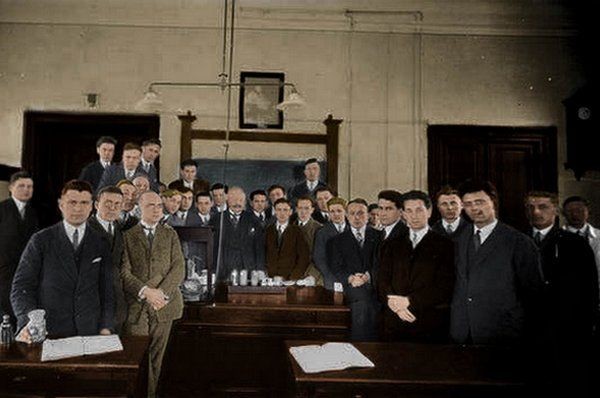
The pre-war students actually lacked general knowledge (coloration:RK).
It is a common judgment that compared to today's education, it is excellent from the times of the Second Polish Republic, and the pre-war matura exam is equal to today's master's degree. Meanwhile, the lecturers of the interwar period were downright devastated by the level presented by the students. And it's hardly surprising. There were even those who did not know how much 5% is from 200, explaining the lack of paper and pencil to compose the appropriate… equation. Others, in turn, argued that Germany lay between Russia and Poland ... (read more about this).
6. Świętosława Mieszkówna shook the whole of Scandinavia
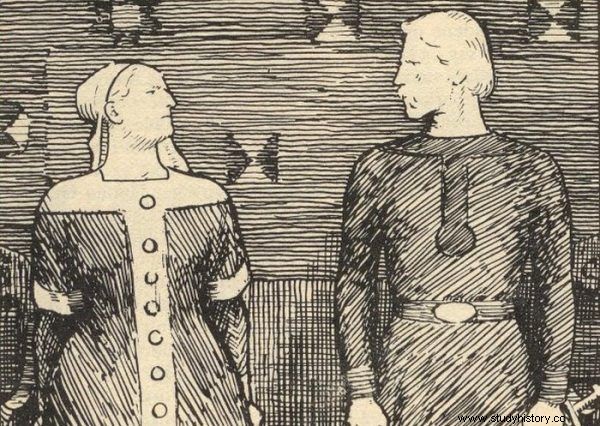
Here are Świętosława and her would-be husband Olaf Tryggvason. Only if for sure? 19th-century drawing by Erik Werenskiold (public domain).
The famous Polish queen of the Vikings has been devoted to a whole sea of articles, novels and scientific works. The all-powerful wife of two kings, a formidable femme fatale who burns candidates alive in her hand, awakens the imagination to this day. The only problem is that her biography is crackling at the seams. Everything seems to indicate that the superhero of the Polish Middle Ages was created by combining the lives of at least two (competing with each other!) Women. And her name was never Świętosława! (read more about this).
5. The export of Polish coal to Scandinavia gave us a sudden prosperity
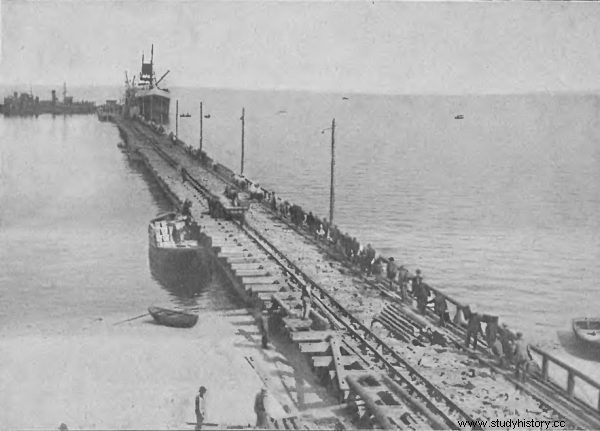
The legendary Scandinavian export turns out to be just a legend. The photo shows the first ocean ship that called at the port of Gdynia on August 13, 1923 ("Tygodnik Ilustrowany", public domain).
In works devoted to the Second Polish Republic, information about the huge role of Polish coal exports to Scandinavian markets is often found. Trade with the North reportedly contributed to the revival of our economic situation in our country in the years 1926-1929. However, the numbers do not confirm this at all. Less than 5% of Polish coal exports went to the Scandinavian markets. And the profits obtained in this way accounted for only a negligible percentage of the income of the Polish budget (read more on this topic).
4. All Poles reacted enthusiastically to Piłsudski's Legions

The march through Congress Poland, contrary to the legend, was a series of misfortunes ... The photo shows the entry of the First Cadre Company to Kielce on August 12, 1914 (public domain).
In 1914 Józef Piłsudski expected that the people living in the territory of the Russian partition would accept his army with open arms. And we still believe that this is what happened ... In fact, however, as Michał Tadeusz Brzęk-Osiński euphemistically stated the uhlan, , there was no place for us to greet the gates of triumph. The inhabitants of Congress Poland were afraid of the legionnaires and considered their independence uprising as madness. Kadrówka soldiers could not even count on a little food or accommodation ... (read more about this).
3. The defenders of Westerplatte repulsed 13 strikes
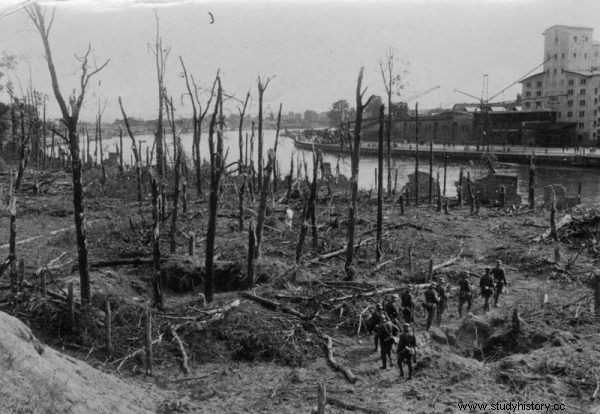
This forest on Westerplatte was not destroyed by 13 storms (photo Bundesarchiv, Bild 183-2008-0513-500 / CC-BY-SA 3.0).
Many sources say that the defenders of Westerplatte repulsed thirteen or even fourteen German strikes. It should be put between fairy tales. The Germans carried out only two general assaults and one attack as part of deep reconnaissance. Both assaults took place on the first day of the competition. The third one, scheduled for September 8, never happened (read more about that).
2. Grunwald was an unused victory
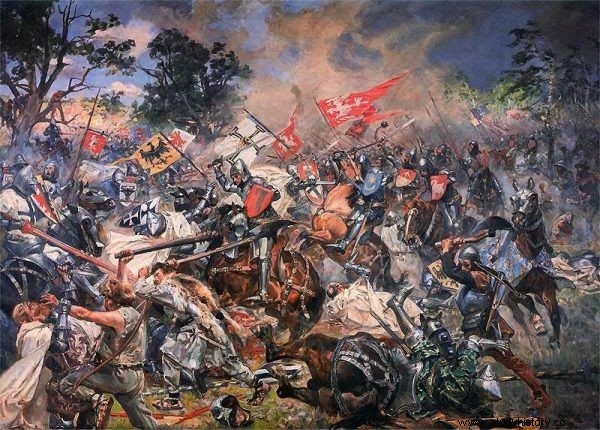
Was the victory over the Teutonic Knights really not used? The Battle of Grunwald in the painting by Wojciech Kossak (public domain).
To this day, the opinion persists that the Victoria of Grunwald did not bring us anything. However, let us put aside fairy tales about the possibility of conquering Malbork and liquidating the monastic state. When we stop thinking in terms of the "maximum plan" it turns out that the benefits of winning were not so small. Poland not only regained the Dobrzyń land, but also achieved an amazing propaganda success. She managed to reduce the influence of the Teutonic Knights in Europe. And in addition, it has gained ... full protection of one of the borders for over three centuries! (read more about this).
1. The defense of Częstochowa was a miracle
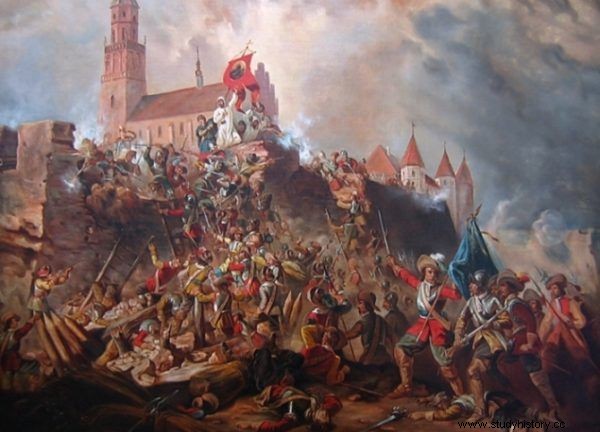
Artists like to imagine the siege of Jasna Góra in line with Sienkiewicz's vision. Well, the reality was a bit different than in the painting by Franciszek Kondratowicz from the 19th century ... (photo:Maciej Szczepańczyk, license CC BY 3.0).
Contrary to what Sienkiewicz had instilled in us, who besieged Jasna Góra in 1655, the Swedes only looked threatening on paper. Though they could be impressive in numbers, their loyalty was not good, and their preparation was even worse. Already at the start, they lacked cannons, bullets and gunpowder. Meanwhile, the monastery was well fortified and its defenders had excellent artillery. If there is a miracle near Częstochowa, it is probably only that the siege lasted a month and a half ... (read more about this).
